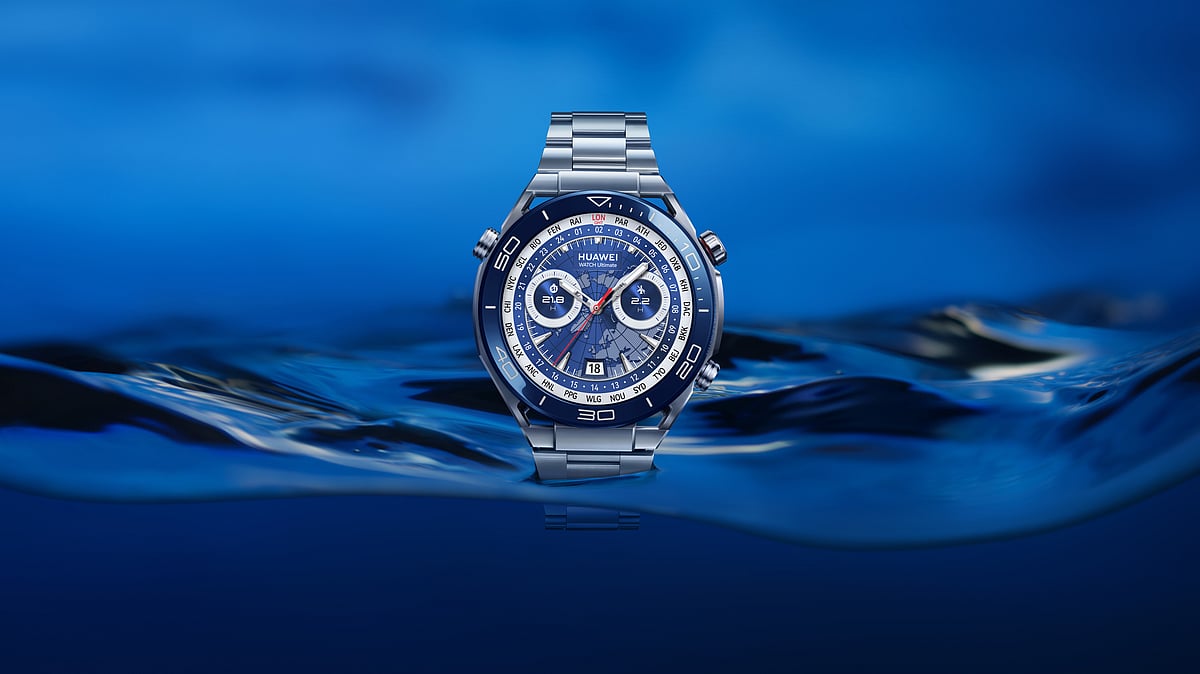Shenzhen, China: For years, cutting-edge wearable features often debuted in China before slowly reaching international markets. However, Chinese technology juggernaut Huawei said it hopes to shatter that gap. It explicitly plans to bring its most advanced TruSense health innovations, previously region-specific, to the UAE and other global markets through synchronised launches.This strategic shift, detailed during a recent media briefing, addresses a key concern for tech enthusiasts worldwide – When will Huawei devices released in China be distributed in global markets?For one, the devices are much more advanced thanks to the company’s adoption of its operating system, HarmonyOS. The tech giant developed HarmonyOS as an alternative to Android, aiming to create a self-sufficient ecosystem. HarmonyOS is designed to work across various devices, including smartphones, smartwatches, and other IoT devices, providing a unified platform for Huawei’s products. The company aims to eventually transition completely away from Android and rely solely on HarmonyOS for its devices.And two, the wearables offer exceptional batteries because of the aforementioned custom operating system, efficient hardware, and optimised software. One Huawei employee told me it needed a charge only once in ten days. So, why aren’t they in UAE yet?.‘Will happen in the future’“In the future, we can expect to have a synchronised launch for the features in the Middle East, Europe, and China,” a Huawei spokesperson said without providing a specific launch date. To make this happen, the tech giant is committing to deep-dive local cooperation with medical institutions and integrating technologies specifically for local customers, leveraging the core “openness” of its TruSense platform. This is a game-changer for regions like the UAE, ensuring access to the latest health monitoring capabilities without delay.Huawei’s health research centre – Health Labs are impressive research facilities focused on advancing health and fitness technology for Huawei’s wearable devices. These labs, such as the one in Dongguan, China, and another in Helsinki, Finland, conduct research in areas like exercise physiology, biomechanics, and sports science. . Huawei wows with world’s first triple-fold Mate XT.With 180 million devices shipped and serving 540 million users, Huawei sees an expansive future for this consumer electronics segment. “We believe that wearables, as a segment of wearables, are just starting,” the spokesperson noted, adding, “We are quite optimistic about this segment. We have seen a greater development space for wearable devices.”The official said, “We have customised the customer service in different markets, and when we are developing the sensors and technology, we have taken into consideration different colour tones. From the beginning, we have taken these things into consideration.”They added, “For example, for the glucose testing and ovarian monitoring as well as the cardiovascular monitoring, we have to cooperate with the local medical institutions, and this is also one of our future deployments from the Middle East to Europe, to China, we would like to cooperate with the local medical institutions and integrate the technologies locally for local customers.”. Magic of TruSenseHuawei launched its most recent wearables, the Huawei WATCH 5 series and Huawei FIT 4 series, on May 15 this year.The core of this ambition is the TruSense System (or Xuanji Sensing System), a platform that boasts accuracy, comprehensive data, and speed. We are talking about industry-leading precision: over 98 per cent accuracy for dynamic heart rate and less than 2 per cent deviation for blood oxygen.The tech is formidable. Imagine medical-grade 24-hour ambulatory blood pressure monitoring from your wrist via the WATCH D2 series. Or the new WATCH 5 series, which rolled out with a “distributed super sensing module” that fuses data from your wrist and fingertips. This multi-sensor approach extends to acoustic analysis of coughs for early lung issue detection and comprehensive emotional health monitoring.All this data is crunched in real-time, enabling a “one-button health check” providing over 10 key indicators in just 60 seconds..Noninvasive glucose readingHuawei is also looking far ahead. Their audacious goals include achieving noninvasive blood glucose monitoring. While acknowledging the current challenges, the spokesperson stated, “With the continuous and noninvasive detection method, we can raise the early awareness of the potential risk for the users.”They ultimately hope “to generate the accurate data, accurate results, as the invasive method.” This long-term vision also extends to comfort: “For the wearable experiences, they are going to be more comfortable and with stronger and more advanced functions and higher, more advanced testing technologies.”While Huawei continues to invest in other wearables like headphones and smart glasses for health metrics, the watch remains central. “we have a lot of breakthroughs in our watches because the watches you can wear 24/7, and it can have a continuous health and long cycle health monitoring,” the spokesperson explained. “it will not only be applied in the watches, but in the future, we can look forward to more sites for monitoring.”.Huawei’s 3,000km, 5-minute charge battery patent just supercharged the tech race.PC-level productivity meets tablet convenience with HUAWEI MatePad Pro 12.2″.Huawei’s $1,000 Pura X flip phone runs in-house HarmonyOS. Huawei wows with world’s first triple-fold Mate XT
